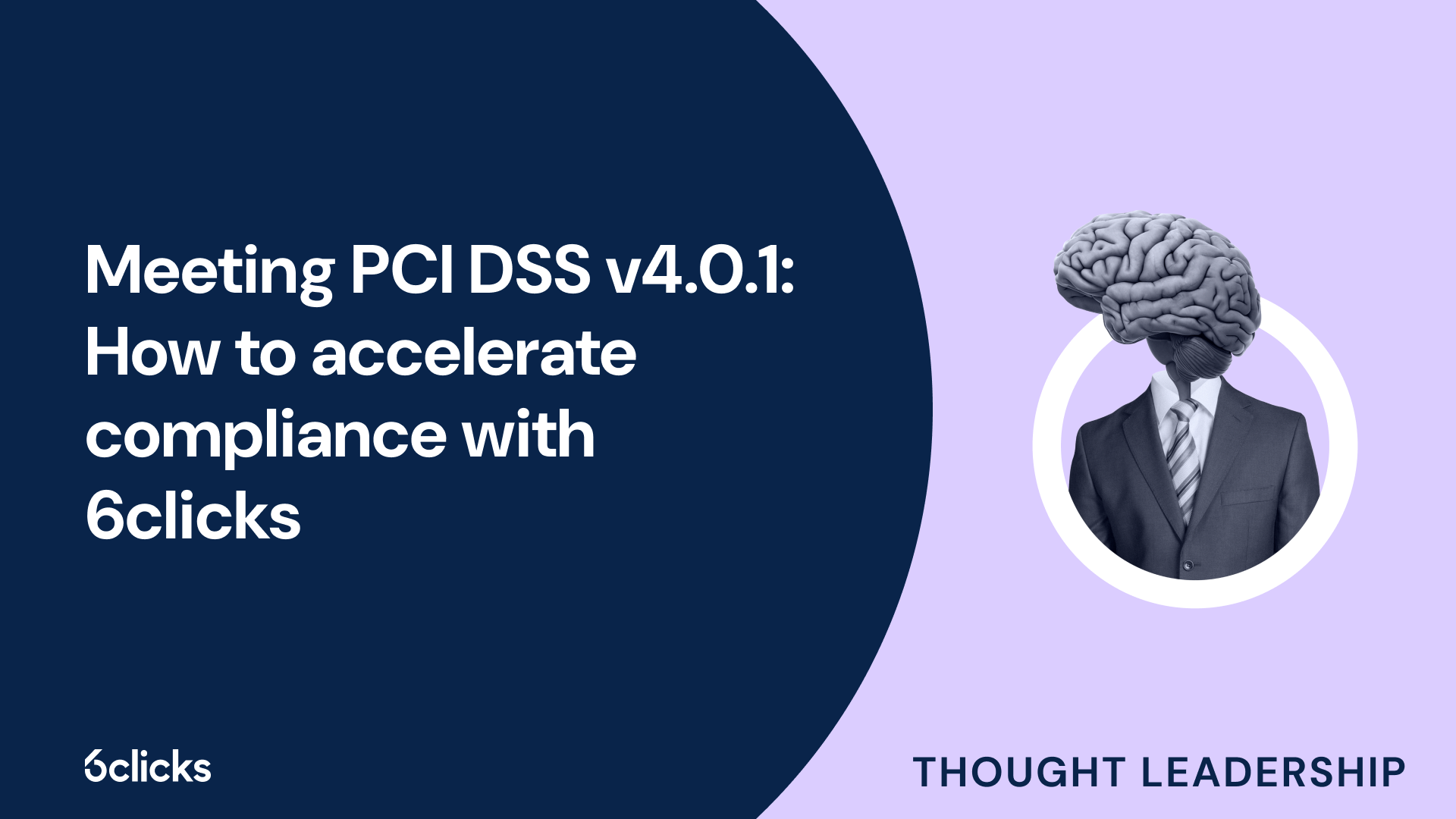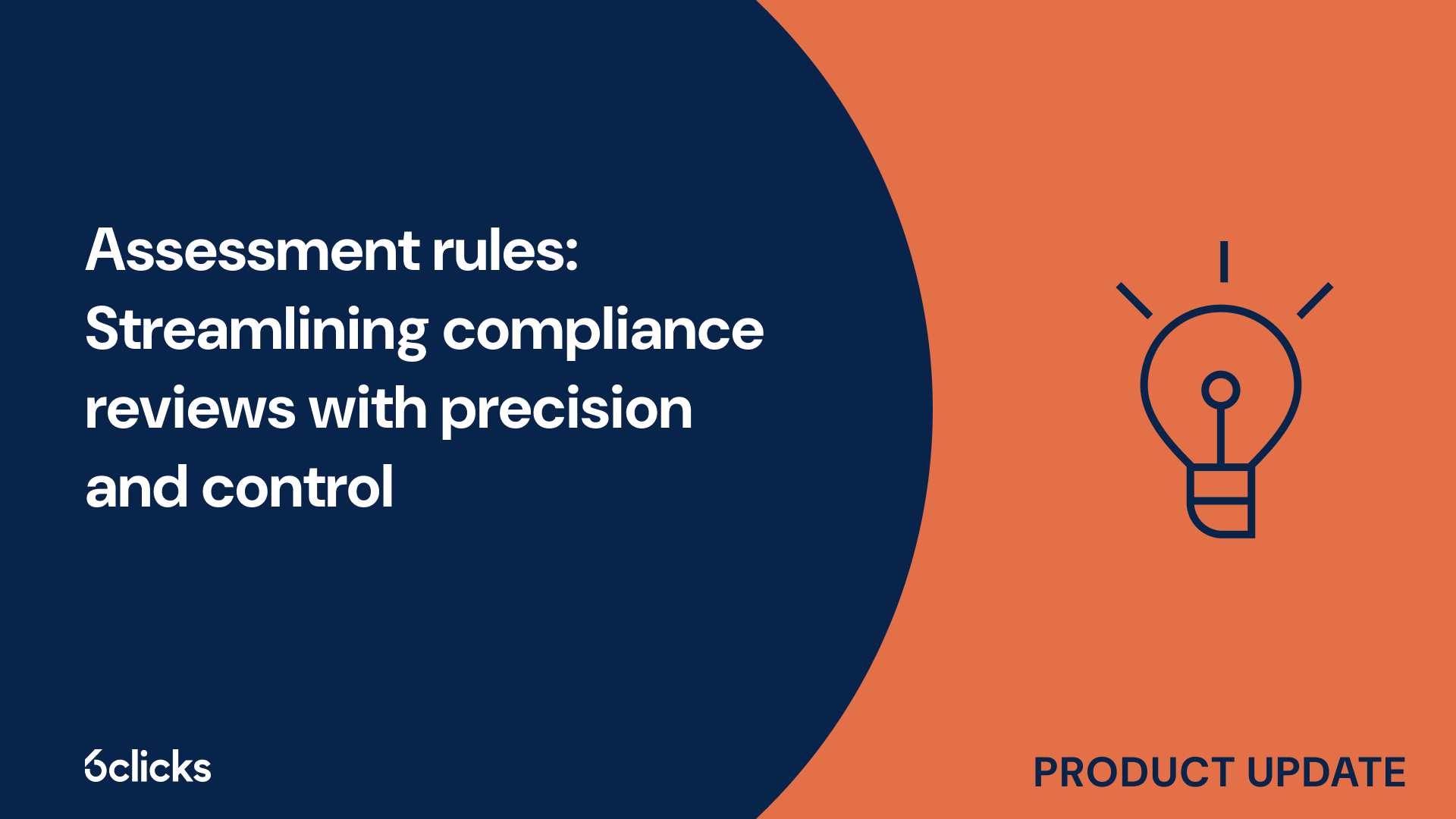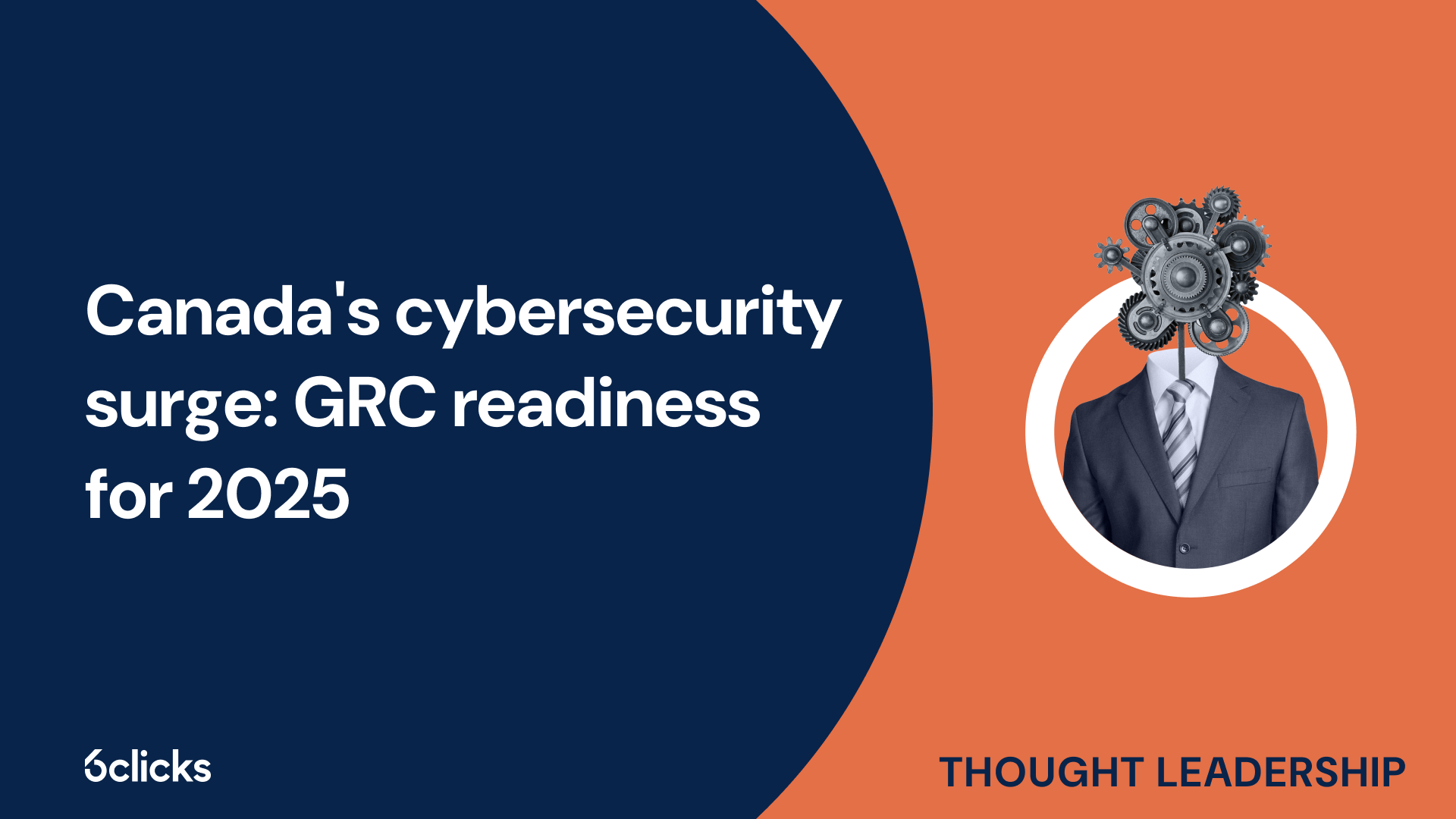The GRC buyer’s guide for 2025: Building resilience with AI-powered, federated solutions
Discover the ultimate GRC buyer's guide for 2025! Uncover how AI-powered, federated solutions transform compliance and security management for industries like government, aerospace, banking, and more. Learn about centralized control, continuous compliance, and advanced cyber GRC capabilities. Download now!
-1.png?width=200&height=249&name=Group%20193%20(1)-1.png)
The GRC buyer’s guide for 2025: Building resilience with AI-powered, federated solutions
What is the CIS security framework?
The CIS (Center for Internet Security) security framework is a set of best practices and controls that organizations can implement to improve their cybersecurity posture. It provides a comprehensive list of controls that are derived from real-world attacks and threat intelligence and designed to protect against the most common and damaging cyber threats. The framework prioritizes the most critical security measures and identifies specific actions that organizations should take to effectively defend against cyber attacks. It covers a wide range of security areas, including network and mobile device security, security configurations, unauthorized software, and security incident response. The CIS security framework is widely recognized and adopted by security professionals and organizations worldwide as a reliable and effective method for enhancing security defenses and mitigating security risks. By following the guidelines provided by the CIS security framework, organizations can establish a strong security policy, reduce their vulnerability to cyber threats, and ensure regulatory compliance.
Benefits of the CIS security framework
The CIS (Center for Internet Security) security framework provides a comprehensive set of security controls and best practices that organizations can implement to enhance their security posture. By following the CIS controls, organizations can effectively defend against a wide range of known attacks, reducing the risk of a security incident and minimizing the potential impact.
The benefits of the CIS security framework are numerous. First and foremost, it provides organizations with a well-defined roadmap for implementing security measures. The framework consists of a set of 20 critical security controls, which cover various areas such as inventory and control of hardware and software assets, continuous vulnerability management, secure configuration of network devices and mobile devices, and effective user and incident response management. By following these controls, organizations can ensure that they have implemented the necessary security measures to protect their critical assets.
Additionally, the CIS controls can be utilized alongside other compliance and security standards, such as NIST 800-53, PCI DSS, FISMA, and HIPAA. The CIS security framework aligns with these standards and helps organizations meet the requirements specified by each. By using the CIS controls in conjunction with these standards, organizations can achieve a higher level of security and ensure compliance with legal and industry regulations.
About CIS critical security controls
The CIS Critical Security Controls (CSC) is a globally recognized cybersecurity framework that provides organizations with a comprehensive set of best practices to improve their security posture. These controls are designed to address common attacks and cyber threats, and they encompass a wide range of security measures across different areas, from asset inventory and vulnerability management to incident response and user awareness. Implementing the CIS controls can help organizations enhance their security defenses and protect their critical assets from unauthorized access and security incidents. Furthermore, the CIS controls can be used in conjunction with other compliance frameworks and security standards to achieve regulatory compliance and meet industry requirements. By following the CIS Critical Security Controls, organizations can establish a strong cybersecurity foundation and proactively mitigate security risks.
Overview of the CIS security framework
The CIS (Center for Internet Security) security framework is a set of guidelines and best practices designed to enhance an organization's cybersecurity defense. Its purpose is to provide a comprehensive and structured approach to managing and securing IT systems and networks, regardless of their size or complexity. The framework's objectives are to minimize security risks, protect critical assets, and improve an organization's overall security posture.
A key component of the CIS security framework is the CIS Critical Security Controls (CSC). These controls serve as a prioritized set of actions that help organizations effectively defend against common cyber threats and attacks. The CSC provides a minimum standard of security measures and recommendations that organizations should implement to reduce their exposure to security vulnerabilities.
The CIS security framework consists of several components, including security policies, security configurations, security incident response, and active management of security technologies. Each component plays a crucial role in enhancing an organization's cybersecurity defense. For example, security policies help establish guidelines and procedures for managing security risks, while security configurations ensure that network and mobile devices are properly secured and patched with the latest security updates. Furthermore, active management of security technologies enables organizations to proactively identify and respond to security incidents.
Components of the CIS security framework
The CIS security framework encompasses several components that collectively contribute to effective cybersecurity defense. These components are designed to address various aspects of security and risk management.
Firstly, security policies are critical as they establish guidelines and procedures for managing security risks. These policies outline best practices and standards that organizations should adhere to, promoting a culture of security awareness and accountability.
Next, security configurations play a vital role in ensuring that network and mobile devices are properly secured. This involves implementing and maintaining appropriate security controls, such as firewalls, intrusion prevention systems, and encryption protocols, to protect against unauthorized access and data breaches.
Additionally, security incident response is crucial for effectively handling security incidents. This component involves establishing processes and procedures for detecting, analyzing, and responding to security breaches and cyberattacks promptly. By having an organized and swift response, organizations can minimize damage and prevent further compromise.
Lastly, active management of security technologies enables organizations to proactively identify and respond to security incidents. This includes regularly updating and patching security systems, conducting penetration testing to identify vulnerabilities, and staying informed about the latest cybersecurity risks and trends.
Types of critical security controls identified by the framework
The CIS (Center for Internet Security) framework identifies several types of critical security controls, with a particular focus on the 20 Critical Security Controls. These controls are grouped into three categories: Basic CIS Controls, Foundational CIS Controls, and Organizational CIS Controls.
The Basic CIS Controls consist of the first six controls, which are considered essential for establishing a strong cybersecurity foundation. These controls include inventory and control of hardware assets, inventory and control of software assets, continuous vulnerability management, controlled use of administrative privileges, secure configuration for hardware and software on mobile devices, laptops, workstations, and servers, and maintenance, monitoring, and analysis of audit logs.
The Foundational CIS Controls comprise controls 7 to 16, which build upon the Basic CIS Controls. These controls address common attack patterns and enhance an organization's capability to detect and respond to cyber threats. They involve areas such as email and web browser protections, malware defenses, boundary defense, data recovery capabilities, secure network engineering, and penetration testing.
The Organizational CIS Controls, controls 17 to 20, focus on establishing cyber defense mechanisms at an organizational level. These controls address areas such as security awareness and training programs, application software security, incident response and management, and penetration testing and red team exercises.
Implementing these critical security controls is crucial for organizations to establish a strong cybersecurity posture. They provide a framework for organizations to prioritize their security measures, allocate resources effectively, and mitigate potential risks. By following these controls, organizations can significantly reduce their likelihood of falling victim to cyberattacks and minimize the impact of any security incidents that do occur.
How to implement and manage cybersecurity within an organization using the CIS framework
Implementing and managing cybersecurity within an organization using the CIS framework involves several key steps.
Firstly, it is crucial to identify and assess threats that may pose a risk to the organization's assets and critical systems. This includes conducting regular vulnerability assessments and penetration testing to uncover potential weaknesses and vulnerabilities.
Once the threats have been identified, the next step is to select and implement defensive mitigations. This involves leveraging the CIS controls to establish security measures such as inventory and control of hardware and software assets, continuous vulnerability management, and secure configuration of devices and systems.
In addition, establishing a Security Operations Center (SOC) plays a vital role in managing cybersecurity effectively. A SOC serves as a centralized hub for monitoring, detecting, and responding to security incidents. It enables proactive threat hunting and incident response capabilities, ensuring timely mitigation of any potential risks.
Furthermore, organizations should prioritize information sharing with other cyber defenders. This collaborative approach helps in staying updated on the latest cyber threats, vulnerabilities, and defensive techniques. By actively participating in sharing forums and partnerships, organizations can strengthen their cyber defenses and ensure a comprehensive security posture.
Understanding cyber threats and common attacks
In today's interconnected world, understanding cyber threats and common attacks is essential for organizations to protect themselves from potential security breaches. Cyber threats can come in various forms, including malware, ransomware, phishing attacks, and insider threats. These threats can compromise sensitive data, disrupt operations, and damage an organization's reputation. Common attacks, such as distributed denial-of-service (DDoS) attacks, social engineering, and password attacks, are frequently used by hackers to gain unauthorized access or exploit vulnerabilities in systems. By understanding these threats and attacks, organizations can develop robust defensive strategies, implement necessary security measures, and educate their employees on best practices to mitigate risks and maintain a strong cybersecurity posture.
Overview of cyber threats and common attacks
In today's digital age, cyber threats and attacks have become a prevalent concern for individuals, businesses, and governments alike. Hackers and malicious individuals constantly seek vulnerabilities in networks and devices to exploit for personal gain or with intent to cause harm.
Cyber threats can be broadly categorized into two main types: internal and external. Internal threats refer to attacks that originate from within an organization, such as an employee or contractor with unauthorized access to sensitive information. External threats, on the other hand, come from outside the organization and can be perpetrated by hackers, cybercriminals, or even nation-states.
Common attacks include malware, phishing, ransomware, brute force attacks, and denial of service (DoS) attacks. Malware, short for malicious software, is a type of software that infiltrates systems and can cause harm, such as stealing sensitive data or disrupting operations. Phishing attacks involve tricking individuals into revealing personal information or login credentials by posing as a trustworthy entity. Ransomware attacks encrypt a user's files, demanding payment for their release. Brute force attacks involve attempting every possible combination of characters to crack passwords, while DoS attacks overwhelm systems with excessive traffic, causing them to grind to a halt.
These threats and attacks exploit weaknesses in networks and devices, including outdated software, unpatched vulnerabilities, weak passwords, or lack of security configurations. To mitigate these risks, organizations must implement robust cybersecurity measures, such as regular security updates, strong passwords, two-factor authentication, and employee awareness training.
Maintaining an effective defense against cyber threats requires constant vigilance, proactive monitoring, and the adoption of best practices outlined in cybersecurity frameworks such as the CIS Critical Security Controls or the NIST Cybersecurity Framework. By understanding and addressing these emerging threats and attacks, organizations can enhance their security posture and protect critical assets from potential harm.
Types of common attacks exploiting weaknesses in networks and devices
In today's interconnected world, networks and devices face numerous cyber threats that exploit weaknesses and vulnerabilities in their systems. These attacks can compromise the security of data and systems, leading to potential financial and reputational damage for organizations. Understanding the types of common attacks is crucial in implementing effective cybersecurity measures.
Malware is a prevalent form of attack that infiltrates systems through malicious software, such as viruses, worms, or trojans. Once inside a network or device, malware can steal sensitive information, disrupt operations, or even provide unauthorized access to attackers.
Phishing attacks target individuals through deceptive emails or websites, tricking them into revealing personal information or login credentials. These attacks often imitate legitimate organizations or individuals, making it challenging for users to identify the malicious intent.
Ransomware attacks encrypt a user's files, demanding payment for their release. These attacks can cause significant operational disruption and financial losses.
Distributed Denial of Service (DDoS) attacks overwhelm systems with excessive traffic, causing them to become unavailable to legitimate users. By flooding the system with traffic, attackers can disrupt normal operations and prevent access for users.
These common attacks exploit weaknesses in networks and devices, such as outdated software, unpatched vulnerabilities, weak passwords, or lack of security configurations. To protect against these threats, organizations must implement robust cybersecurity measures, including regular security updates, strong passwords, employee awareness training, and the use of advanced threat detection tools. By being proactive in addressing these vulnerabilities, organizations can enhance their defenses and minimize the risk of compromise to their networks and devices.
Differentiating between internal and external threats
Internal threats and external threats are two distinct categories of cybersecurity risks that organizations face. Understanding the difference between them is crucial for effective cybersecurity management.
Internal threats refer to risks that originate from individuals within the organization who have authorized access to systems and data. These individuals may include current or former employees, contractors, or business partners. Internal threats can stem from unintentional actions, such as human error or negligence, or deliberate malicious intent.
On the other hand, external threats come from outside the organization and target its systems and data. These threats are often perpetrated by cybercriminals or other external entities with the intent to gain unauthorized access, steal sensitive information, disrupt operations, or commit other malicious activities.
Several factors differentiate internal threats from external threats. Internal threats tend to have more knowledge and familiarity with the organization's systems and potentially have elevated permissions or privileges, making them potentially more dangerous. They often involve activities that exploit authorized access to carry out malicious actions.
External threats, on the other hand, usually involve individuals or groups who lack the insider knowledge and access that internal threats possess. They rely on various techniques such as hacking, phishing, or social engineering to bypass security measures and gain unauthorized access to systems and data.
To protect against internal threats, organizations must implement strong access controls, monitor and detect anomalous behavior, and provide comprehensive training to employees regarding security best practices. Combating external threats requires robust perimeter defenses, such as firewalls and intrusion detection systems, as well as regular security updates and vulnerability assessments.
By understanding the characteristics and nature of internal and external threats, organizations can develop a more comprehensive and effective cybersecurity posture to safeguard their systems and data from both types of risks.
Measures for preventing unauthorized access to networks, devices, applications, and data
Preventing unauthorized access to networks, devices, applications, and data is crucial to maintaining the security and integrity of an organization's information assets. By implementing the following measures, organizations can minimize vulnerabilities and protect against potential threats:
- Strong user authentication: Implementing strong authentication mechanisms, such as multi-factor authentication (MFA) or biometric authentication, ensures that only authorized individuals can access networks, devices, applications, and data. This helps to prevent unauthorized access by adding an extra layer of security beyond just a username and password.
- Access controls: Implementing access controls, such as role-based access control (RBAC) or attribute-based access control (ABAC), allows organizations to grant or restrict access to specific resources based on the user's role, responsibilities, or other defining attributes. This helps to prevent unauthorized users from accessing sensitive information or performing actions they should not be allowed to perform.
- Network segmentation: Segmenting networks into smaller, isolated subnetworks or VLANs can help prevent unauthorized access by limiting the scope of potential attackers. By separating critical systems and sensitive data from public-facing networks or less secure areas, organizations can better protect their assets.
- Regular access reviews: Periodically reviewing and auditing user access rights helps to identify and remove any unnecessary or outdated privileges. This ensures that only authorized users have access to networks, devices, applications, and data, helping to prevent unauthorized access by removing unnecessary entry points.
- Encrypted communication: Enforcing the use of encryption protocols, such as Secure Sockets Layer (SSL) or Transport Layer Security (TLS), for network communication adds an extra layer of security. It ensures that data transmitted between devices, applications, and networks is protected against unauthorized interception, minimizing the risk of data breaches.
- Intrusion detection and prevention systems (IDS/IPS): Deploying IDS/IPS solutions helps to detect and prevent unauthorized access attempts in real-time. These systems monitor network traffic and apply predefined rules to identify and block suspicious or malicious activity, effectively minimizing the risk of unauthorized access.
By implementing these measures, organizations can significantly reduce the likelihood of unauthorized access to their networks, devices, applications, and data. These preventive measures not only safeguard against potential security breaches but also enhance the overall security posture of the organization.
Establishing effective cyber defense strategies with CIS controls
Establishing effective cyber defense strategies is crucial in today's digital landscape where cyber threats are becoming increasingly sophisticated. The Center for Internet Security (CIS) provides a comprehensive security framework known as the CIS Controls, which offers organizations a set of best practices to strengthen their cybersecurity posture. These controls are based on real-world incidents and are continually updated to address emerging threats and vulnerabilities. By implementing the CIS Controls, organizations can proactively protect critical assets, mitigate common attacks, and establish a robust security posture. This article will explore how the CIS Controls can help organizations establish effective cyber defense strategies and enhance their overall security measures.
Overview of establishing effective cyber defense strategies with CIS controls
Establishing effective cyber defense strategies is crucial for organizations to protect their critical assets from cyber threats and attacks. The Center for Internet Security (CIS) provides a comprehensive framework known as the CIS Controls, which helps organizations prioritize and focus on specific actions to improve their cybersecurity posture.
The CIS Controls are a set of best practices and guidelines that organizations can follow to enhance their security measures. These controls are derived from actual attack data and are continuously updated to address the evolving threat landscape. By implementing the CIS Controls, organizations can effectively reduce their cybersecurity risks.
The first step in leveraging the CIS Controls is to identify and prioritize the most critical security vulnerabilities and weaknesses in an organization's network and systems. This involves conducting a risk assessment and understanding the potential impact of each vulnerability.
Once the vulnerabilities are identified, organizations can then implement the CIS Controls in a phased manner. The controls are categorized into three implementation groups based on the level of maturity an organization has in terms of security practices. This allows organizations to prioritize and focus on the controls that are most relevant to them.
To streamline the implementation process, organizations can leverage automation tools that can help in managing and monitoring the security configurations of network devices, mobile devices, and other critical assets. These tools enable organizations to efficiently apply security updates, enforce security policies, and detect unauthorized software or access.
How to leverage automation tools to improve network security posture
Automation tools play a crucial role in improving an organization's network security posture. By leveraging these tools, organizations can streamline and enhance their security practices, ensuring a higher level of protection against cyber threats.
One of the significant benefits of using automation tools is their ability to enforce security controls consistently and accurately. Unlike manual processes, which can be prone to human error and oversight, automation tools ensure that security measures are implemented uniformly across all network devices and systems. This reduces the risk of misconfigurations or missed security updates that can create vulnerabilities in the network.
Implementing CIS Benchmarks is an effective way to ensure strong security configurations. These benchmarks outline best practices for securely configuring various systems and devices. By implementing them through automation tools, organizations can enforce these security standards consistently and accurately. With the proven framework of CIS Benchmarks, organizations can confidently configure their systems to align with industry-accepted security practices.
In addition, automation tools enable organizations to continuously monitor and manage their security configurations. By automating the process of detecting and remediating any unauthorized changes or vulnerabilities, organizations can proactively address potential security risks. This real-time monitoring and active management further enhance an organization's ability to detect and respond to security incidents promptly.







